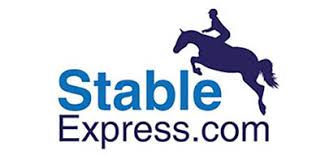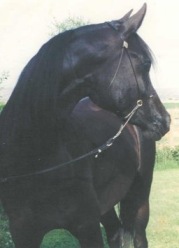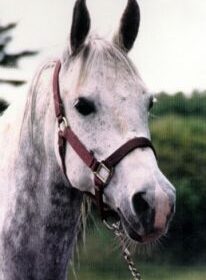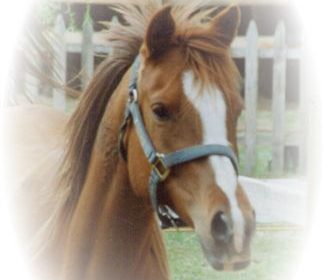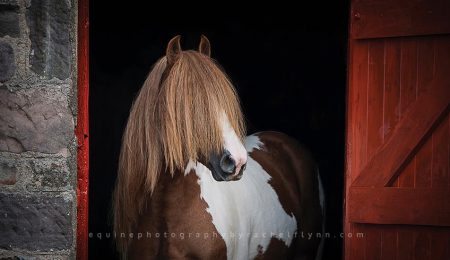Horse Feed
When you are caring for your horse, one of your most important responsibilities will be feeding him properly. Overfeeding grain to a horse can lead to a serious case of gas colic, which is an illness caused by a horse’s inability to burp. Gases develop in the horse’s digestive tract and cause the horse to suffer from severe abdominal pain.
One of the most important ways to avoid colic is to feed your horse regularly. Horses should have three meals a day instead of one large meal. Each meal should include plenty of fiber, so plan to stock up on good quality hay. Also, plan to change the water bucket at each feeding. If your horse is very active or pregnant, you may also be feeding your horse grain or pelleted feed.
Since fiber is so important, you should be sure you get the right kind of hay for your horse. Always tell your feed dealer that you need horse quality hay or you may end up with hay that doesn’t have a lot of nutritional value or hay that wasn’t cut and dried properly. Bad hay can actually kill animals if it is ingested. Even if you trust your feed dealer, break a bale open and smell it before you feed it to your horse. If it looks dusty or smells musty, throw it out. Hay from the first and second cuttings usually has a lot more nutrition than hay from third or even fourth cuttings.
Most horses need to consume about three flakes of hay a day. If you don’t ride your horse frequently and he is getting a little pudgy, you may need to cut back to two flakes a day. If you are picturing a piece of cereal when you think of a flake, think again. A flake of hay is pretty substantial and weighs about four pounds. Most horses do best with a mix of half timothy hay and half alfalfa hay. If your horse is tossing his timothy aside to get to the alfalfa, feed him the timothy first. It is filled with nutrition and less fattening than alfalfa.
For people who don’t have a lot of extra storage room for hay bales, there are other options for giving your horse fiber. One of the most popular options is the hay cube. These cubes are tightly compacted little blocks of hay. Alfalfa cubes are most common, but other types of cubes are also available. You can find a small bag of cubes in most pet stores, but these are usually packaged for bunnies or other small animals. Unless you want to break your piggy bank, you should ask your feed dealer for a 50 pound bag of hay cubes. Although pelleted hay is available, it isn’t very popular with experienced horse owners.
If your horse competes in shows or you go on a lot of arduous trail rides, you will need to supplement his diet with grain or pelleted feed. Few pleasure horses need more than a cup of grain or horse feed several times a week. Talk to your veterinarian about how much grain your horse should have before you give him this type of feed on a daily basis, or you may have a very pudgy horse on your hands.
Finally, don’t forget to talk to your veterinarian about giving your horse vitamin and mineral supplements to be sure all of his nutritional needs are being met. Most horses need a mineral salt block, but some horses need additional supplements, as well.
History tells us that the Arabian horse originally came from the Middle East. There, desert tribes bred and rode the Arabian horse for war. They proved quick and agile, and able to run a huge distance. Also, many famous people have ridden Arabian horses, like George Washington and Alexander the Great. Although originating in the desert, the Arabian is now found throughout the world.
There are many features of the breed that make an Arabian horse stand out. They have small muzzles, a broad forehead, a classic wedge and dish shaped head, and they stand round 15 hands tall. A few other unique anatomic features include having only 17 ribs, instead of the usual 18, and having only five lumbar vertebrae instead of the usual six. It is the oldest known riding horse, most likely due to its large lung capacity and endurance.
The Arabian Horse Association (AHA) runs Arabian Horse Registry of America, which is an association that oversees and maintains pedigrees of purebred Arabian horses in America. Membership costs are low and are required if you want to participate in any AHA horse events.
If you are thinking about buying an Arabian horse, you can visit the AHA website to see if the horse and the owner are registered with AHA. Ask the owner to see a copy of the horse’s registration papers to make sure the horse is a purebred. If you do buy a registered Arabian, make sure you get the correct paper work from the owner so you can register the horse under your name.
By maintaining your new horse as a registered Arabian you can increase your horse’s value if you choose to sell him later. The price for a registered Arabian horse can vary from a few thousand to over fifty thousand dollars!
Arabians are exciting horses to be around. Their beauty and history are intriguing and interesting. There is so much more to learn about this breed, that visiting the AHA website would be a good place to continue your learning.
Equestrian Classifieds
Our Pricing and Packages
Bronze
- 10 Regular Ads
- No Featured Ads
- No Top Ads
- No Ads will be bumped up
Business
- Custom Built Website
- Unlimited Regular Ads
- 5 Featured Ads
- 10 Top Ad
Latest Blog Posts
- February 7, 2021
- / Stableexpress
Competing in Events With Your Horse
- February 7, 2021
- / Stableexpress
Dismounting and Untacking Your Horse
- February 6, 2021
- / Stableexpress
